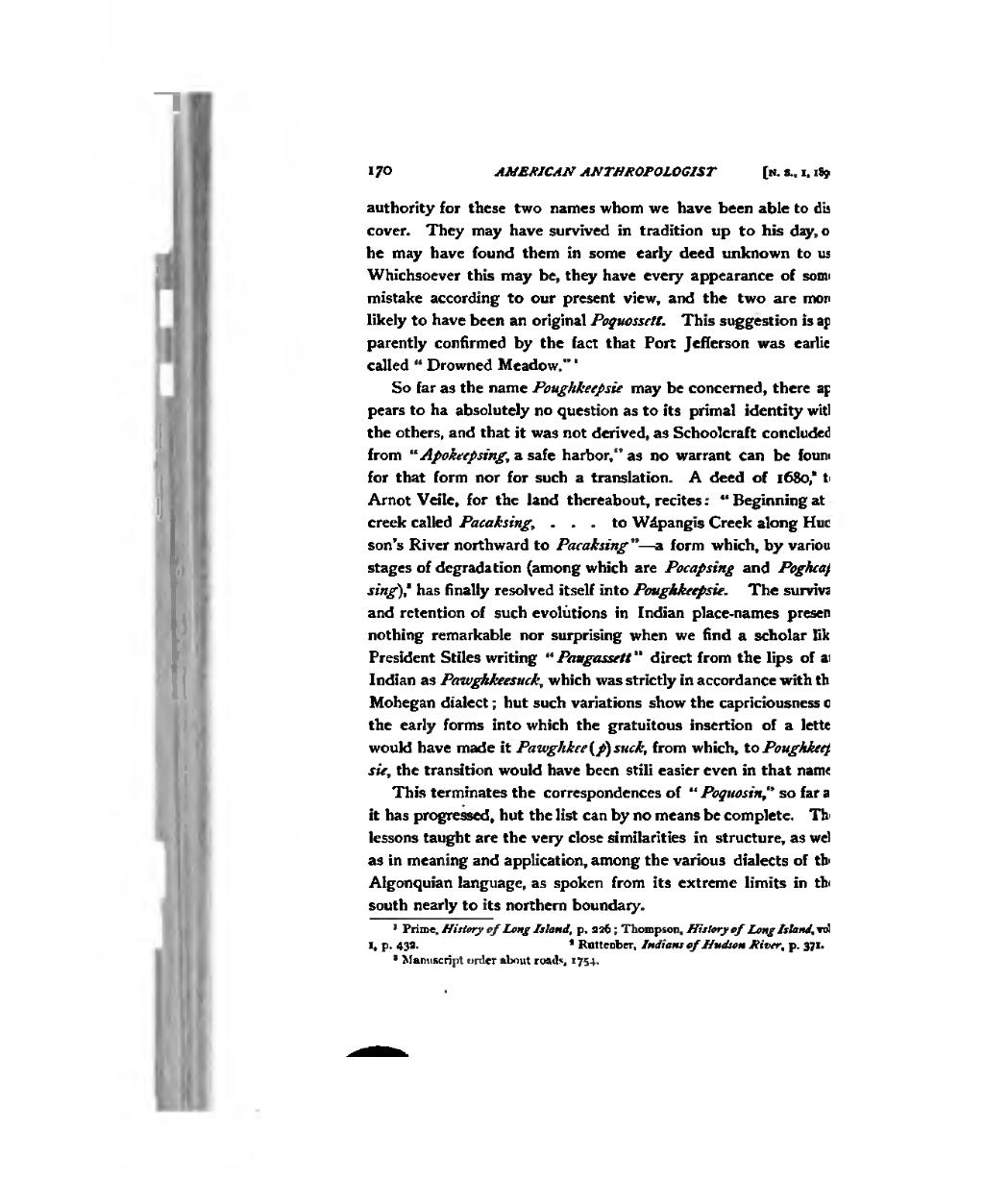I70 AMERICAN ANTHROPOLOGIST [». s., 1. 1S9
authority for these two names whom we have been able to di= cover. They may have survived in tradition up to his day, he may have found them in some early deed unknown to us Whichsoever this may be, they have every appearance of sotm mistake according to our present view, and the two are mon likely to have been an original Poquossett. This suggestion is ap parently confirmed by the fact that Port Jefferson was earlie called " Drowned Meadow.'"
So far as the name Poughkeepsie may be concerned, there ap pears to be absolutely no question as to its primal identity witl the others, and that it was not derived, as Schoolcraft concluded from " Apoktrepsing, a safe harbor," as no warrant can be foum for that form nor for such a translation. A deed of 16S0,' t Arnot Veile, for the land thereabout, recites : " Beginning at creek called Pacaksing, ... to Wapangis Creek along Hue son's River northward to Pacaksing" — a form which, by variou stages of degradation (among which are Pocapsing and Pogkcaf sing)* has finally resolved itself into Poughkeepsie. The survivs and retention of such evolutions in Indian place-names presen nothing remarkable nor surprising when we find a scholar lik President Stiles writing " Pattgassett" direct from the lips of a Indian as Pawghkeesuck, which was strictly in accordance with th Mohegan dialect ; but such variations show the capriciousness the early forms into which the gratuitous insertion of a lette would have made it Pawghkee (/>) suck, from which, toPougkkee} sie, the transition would have been still easier even in that name
This terminates the correspondences of " Poquosin" so far a it has progressed, but the list can by no means be complete. Th' lessons taught are the very close similarities in structure, as wel as in meaning and application, among the various dialects of th' Algonquian language, as spoken from its extreme limits in th south nearly to its northern boundary.
1 Prime. History of Long Island, p, 336 ; Thompson, History ef Long Island, vo I, p. 433. ' Ruttenber, Indians of Hudson Siver, p. 371.
' Manuscript order about roads, 1754.
�� �
